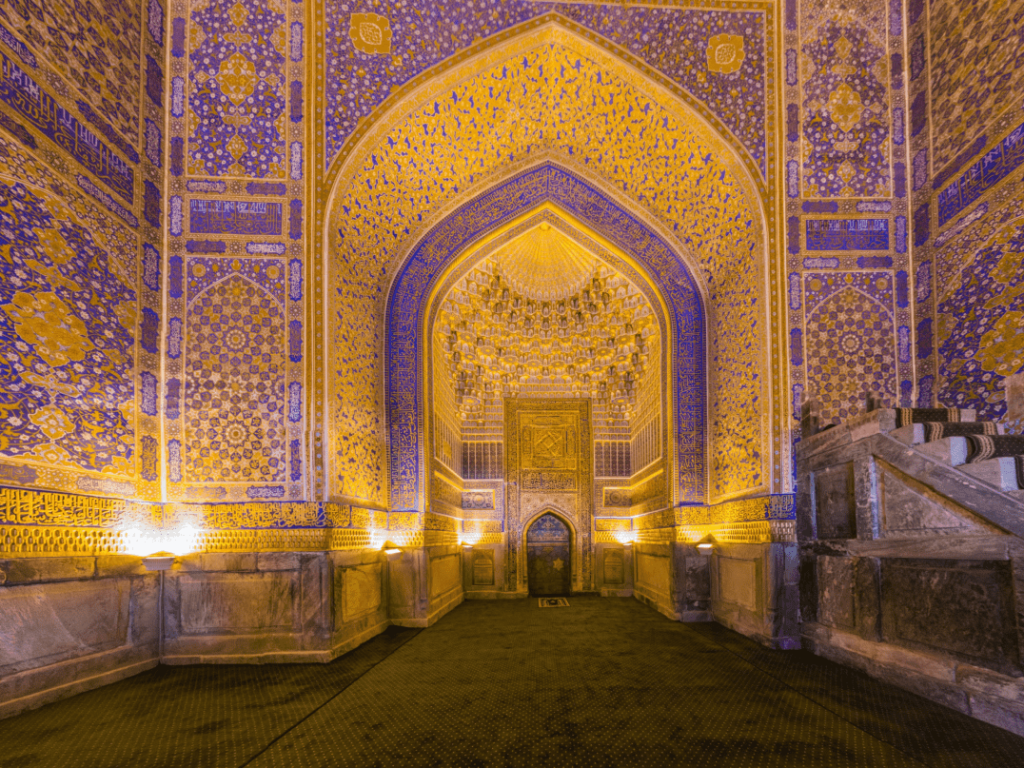Welcome to a world where faith, beauty, and history converge! Islamic art and architecture represent one of the most magnificent and enduring artistic traditions in human history. Far from being a single, uniform style, this art form is a rich tapestry woven with threads from diverse cultures and empires. Thus, it’s a global heritage that tells the story of a civilization’s spiritual and artistic journey. This article will guide you through the core principles and key forms of Islamic art architecture. We will explore its rich Islamic art history, and why muslim art and architecture continue to inspire awe and wonder.
The Foundations of Islamic Art and Architecture
At its core, the unique aesthetic of Islamic art and architecture is shaped by a few key principles that distinguish it from other traditions. These principles are not restrictive; rather, they inspired incredible creativity and innovation.
- Aniconism: In religious contexts, there is a general avoidance of depicting human and animal figures. This principle led artists to focus their genius on other forms of expression. Instead of figures, they explored the infinite possibilities of geometry, the beauty of nature, and the power of the written word.
- The Art of Calligraphy: Because the Quran is considered the word of God, the act of writing became a sacred and highly revered art form. Calligraphy is arguably the most important element in Islamic art and architecture. You’ll see it everywhere, from the walls of mosques to ceramics and textiles. This focus on architecture calligraphy turned buildings into living expressions of faith and beauty.
- Geometric and Vegetal Patterns: Intricate, repeating geometric patterns and stylized floral motifs (known as Arabesque). These are hallmarks of muslim art and architecture. The patterns symbolize the infinite nature of God, with no beginning or end. So, people used to decorate everything from walls and domes to books and metalwork.
Islamic Art History: A Timeline of Splendor
The history of Islamic art architecture began in the 7th century CE and evolved by blending influences from the cultures it encountered—including Byzantine, Sassanian, and Roman—with its own unique aesthetic.
- Umayyad Period (661-750 CE): This era saw the first great monuments of Islam, such as the Dome of the Rock in Jerusalem, which adapted Byzantine architectural styles while introducing new elements like intricate calligraphy and mosaics.
- Abbasid Period (750-1258 CE): This was a golden age of science and art. Cities like Baghdad and Samarra became centers of learning and culture, and architectural forms like the spiral minaret and the use of glazed tiles became prominent.
- Regional Diversity: As the Islamic world expanded, different regional styles emerged. In Spain, the Alhambra Palace showcased Moorish artistry. In Turkey, Ottoman architecture, with its grand domes and slender minarets, took center stage. In Persia, intricate tilework and vibrant colors became a signature style.
Key Forms of Islamic Art and Architecture
The principles and history of Islamic art and architecture took shape in its physical forms.
- The Mosque (المسجد – al-masjid): The most significant building in muslim art and architecture. Key features include:
- The Minaret (المئذنة – al-miʾdhanah): A tower from which you can hear the call to prayer.
- The Dome (القبة – al-qibbah): Often used to symbolize the heavens.
- The Mihrab (المحراب – al-miḥrāb): An ornamental niche indicating the direction of Mecca.
- The Madrassa (المدرسة – al-madrassah): A school or college, often beautifully designed with courtyards and intricate decorations.
- Secular Architecture: People built palaces, fortresses, and caravanserais (roadside inns) with a keen eye for aesthetic detail, showcasing the use of geometric tiles, decorative arches, and lush gardens.
Beyond the Building: Other Forms of Islamic Art
Islamic art architecture is just one part of the story. The same principles are applied to many other art forms.
- Ceramics and Tilework: From the blue-glazed tiles of Samarkand to the mosaic tilework of Spain, ceramic art reached a high level of sophistication.
- Metalwork: Intricate metal objects, like astrolabes and lamps, were decorated with arabesques and calligraphy.
- Textiles: The weaving of beautiful carpets and fabrics was a cherished art form.
The study of Islamic art and architecture is a journey of discovering beauty in patterns, meaning in script, and harmony in design. It is a testament to the power of art to express profound cultural and spiritual ideas without needing to depict the human form.
To further enrich your understanding of Arab culture and the Arabic language, we invite you to visit www.kaleela.com. Moreover, our platform offers engaging lessons and cultural insights to enhance your learning experience. Download the Kaleela Arabic learning app today and continue your exploration of the beautiful and timeless world of Islamic art history.



